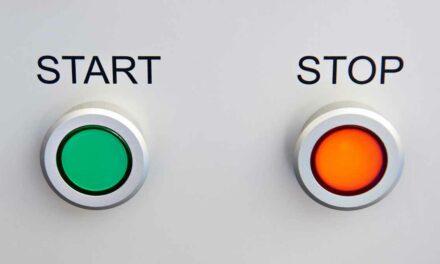For a creator, content quantity is quality.
Trust famous author and screenwriter Ray Bradbury: “Quantity produces quality. If you only write a few things, you’re doomed.”
Publishing more frequently gives you more reps. You accelerate improvement. You gather more feedback from your audience. And you provide a richer sample to the search algorithms. You give your prospective audience a better chance of discovering your content and getting to know you.
Quantity can bring quality. Publishing more frequently gives you more reps. You accelerate improvement, says @MrCabasVidani. #CreatorEconomy #Writing Share on XQuantity requires consistency, though.
You can’t postpone content creation until you get those legendary three uninterrupted hours. Chances are, the latter will never happen. Moreover, content creation must become second nature. It only happens when you do it every day.
For more than 10 years, I’ve produced content – articles, podcasts, videos, courses, ebooks. I like it. I love it. But without efficient systems, nothing guarantees a stable output.
I tested several techniques on myself and others as a habit coach). Let’s look at the most effective systems to become a consistent content creator. (Should we just refer to that as a C³?)
Block that time
If it’s not in the calendar, it doesn’t exist.
You can’t just put a sticky note with the directive: “write” on your screen as a reminder. No, you need to know when you will do it and for how long.
If a task has no reserved space on your calendar, anything can take its place. Commit to creating every day at a dedicated time for a specific duration. Schedule that time on your calendar. Don’t cancel these appointments.
Schedule content creation time on your calendar. Don't cancel those appointments, says @MrCabasVidani. #ContentEntrepreneur #CreatorEconomy Share on XHow do you know the perfect moment and duration?
In the beginning, you probably won’t. Make your best guess at when you focus the best. Choosing the same time every day helps. It simplifies the decision. But if you have a varied schedule, adapt your schedule.
Be a perpetual idea generator
Sitting down without knowing what to create is the doorway to creator’s block. You need an ever-expanding idea repository:
- Immerse yourself in your niche, participating in communities, studying, experimenting.
- Analyze the feedback on your content.
- Take time to reflect on future content possibilities.
Choose a tool to collect your content ideas before they fly away. They are fickle!
I use Todoist. Its Android widget allows me to save any idea in the inbox with a couple of taps. You can choose other note-taking tools such as Evernote, Notion, Trello, pen, and paper. Just be sure your tool of choice is always at hand.
What tools do you use to collect your content ideas so they don't fly away? via @MrCabasVidani. #CreatorEconomy #Writing Share on XThen collect all your content ideas in a single repository. I move them from Todoist to Notion. Sometimes it’s automated through Integromat. Sometimes I do it manually.
I always have 10 times more ideas I need. When I write, I choose the one I prefer and start.
Worship the outline
Improvising is fun. But it doesn’t lead to valuable content.
Take some time to outline your chosen idea. It should tell everything your content needs to include. When you create, you should only choose how to show it.
I write outlines as indented lists. Here’s the one I used for this article:
- Intro
- Why consistency is crucial
- Some quotes
- Techniques
- Block that time
- Be a perpetual idea generator
- Worship the outline
- Divide and conquer
- Start stupidly small
- Perfection isn’t real
I usually go one level deeper, detailing the content of each section. It shows me at a glance what I’ll talk about. It’s easy to spot gaps or unnecessary fluff.
The outline also helps me estimate how long each part will take and schedule creation accordingly.
Divide and conquer
Every piece of content goes through several steps, such as:
- Idea
- Research
- Outline
- Draft
- Edit
- Design
- Upload
- Promote
If you complete each step in order, the output is usually faster and better. Why?
First, every step requires different skills – a different “brain mode.” For instance, writing puts you in creative mode, while editing is analytical. Switching modes wastes energy. Staying inside a single mode gives you momentum. Imagine editing every sentence of an article immediately after writing it. It’s exhausting and confusing.
Second, you can use the phases to organize your work and lay them out on your calendar. You can also batch similar steps for different pieces of content. For example, mornings can be for writing and afternoons for editing.
Third, without identifiable steps, content creation is an amorphous monster. It’s hard to understand which parts take longer, which are challenging, where you thrive, and so on. Working in steps allows you to evaluate your work and develop awareness.
Start stupidly small
Do you say, “I’ll write this weekend when I’ll have the entire morning for myself?” Then Saturday comes and a (proverbial) pipe bursts in the basement, flushing away your writing time.
That is the norm for amateur content creators. However, science shows the effective way to build a new habit is removing the resistance, as Steven Pressfield calls it. This means starting very, very, very small.
Do you want to floss every day? Start with one tooth. It seems stupid, yes. But that is precisely the trick. It’s so ridiculous that there’s no excuse for not doing it.
After doing one tooth, you either floss all the other teeth or floss that tooth day after day to build a habit and then add more teeth to the routine.
Content creators should follow the floss-one-tooth method to build a consistent habit of creating, says @MrCabasVidani. #CreatorEconomy Share on XWhat does this mean for a content creator?
If you haven’t built the habit of consistently creating, create its smallest possible version. I suggest 50 words per day. Or create for at least 15 minutes. When the habit becomes second nature, expand or add another layer.
Perfection isn’t real
A common and insidious mental obstacle for creators is perfectionism.
Every piece of content is a chance to be judged. You can’t stand that idea. So, you keep polishing forever. A 1K-word article takes eight hours to publish. A 10-minute video, two days. Or worse, you don’t even start. Perfecting your content takes too long.
But you know what?
Most of the adjustments to perfect your content are useless. Your audience won’t notice them. They actually can make you less human and relatable.
I published an online course and forgot to cut the wrong take from one of the lessons. A customer noticed it and praised me because I had the guts to go on despite the error.
Getting rid of the idea of perfection is hard. The most effective way is to set hard deadlines. Commit to a publishing schedule that’s a bit of a stretch for you. Then do everything possible to comply with it.
Get rid of the idea of perfection. Set hard deadlines and do everything to comply with them, says @MrCabasVidani. #ContentEntrepreneur #CreatorEconomy Share on XYou’ll be forced to cut out the unnecessary adjustments. Meanwhile, you’ll keep moving toward that new perfection gained only by publishing and getting feedback.
What to do next
If you aren’t yet a consistent content creator, implementing all these suggestions simultaneously is too much. Here’s your battle plan:
- Choose your main channel.
- Commit to a regular publishing frequency on that platform.
- Block some time each day for content creation (following the tiny habit approach).
- Identify the steps necessary to produce that content.
- Follow the content creation schedule one step at a time.
It can feel forced in the beginning. But if you are disciplined, it’ll become second nature. You’ll know yourself better and learn how to adjust the process. Eventually, consistent and effortless (or less effort) creation will be the reward.
About the author
Alberto has been a content entrepreneur since 2010, writing posts, producing videos and podcasts, and selling ebooks, courses, and services. Now he helps content creators become consistent through coaching at https://www.coach.me/albertocabasvidani.










